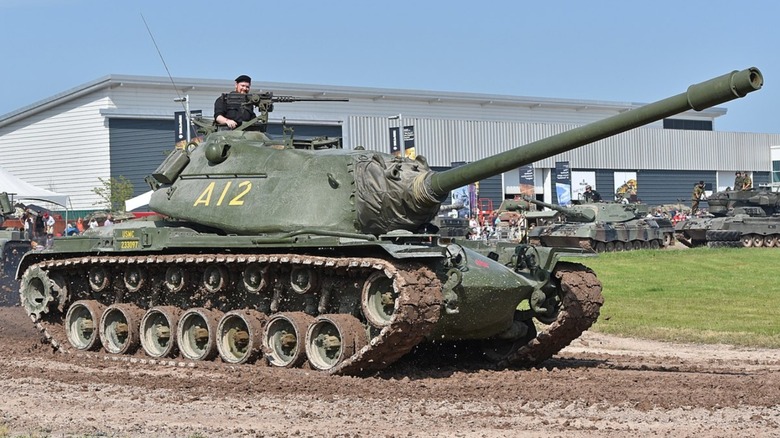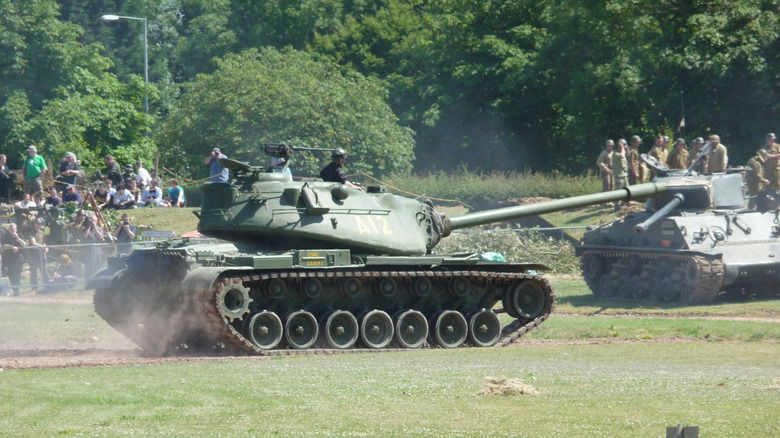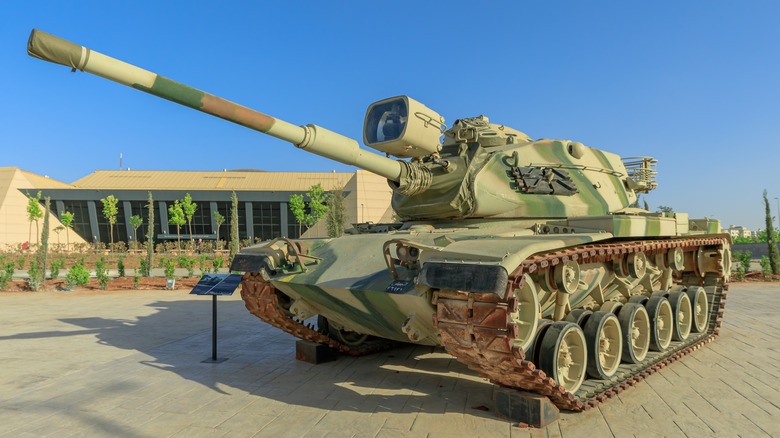Why The US Military's M103 Heavy Tank Never Received A Name
You don't need to be a military historian to know the names of the Abrams, Patton, Churchill, Challenger, or Tiger tanks, to name just a few well-known examples from around the world. The waters get far muddier, though, when you consider that all of these tanks have several variations, and most of those variants have their own nicknames. That's why you may not know a Firefly from an Easy 8, although you'd probably be familiar with the wider Sherman family that unites them and includes some of the most fearsome military tanks ever built. Meanwhile, the M103 is even more obscure, as it was never given a catchy, historically significant name as an identifier.
The U.S. created the M103 to replenish the nation's armored vehicle supply in order to compete with the Soviet Union's heavy tanks amid the threat of the Korean War. In the end, however, the vehicle was hurried through development and arrived into a world that was starting to leave the heavy tank concept behind. As a result, the M103 was barely deployed and never saw combat, so it didn't have time to collect a nickname like some other tanks that were used for years. Ultimately, just the Soviet Union's Object 279, which was too heavy to build, the M103 became nothing more than a fascinating museum relic.
The M103 was developed for a threat that never realized
The U.S. built over 88,000 tanks during the Second World War, but most of these had been destroyed or exported by 1945. Around this time, all eyes were on the IS-2 heavy tank, which was important for the Soviet Union in World War II and beyond. The United States was looking for something to replenish its tank stock amid the Cold War and turned to the M103 because it could be a valid competitor to counter the IS-2's successors.
The M103 was quite the potent tank, at least on paper. Developed in the 1950s by Chrysler, it boasted a 750-horsepower diesel AVDS-1790-2 engine from Continental. It was also heavily armored in 5 inches of cast metal shell, and the M103A2 variant's 120mm M58 was a formidable gun. However, it weighed 62 tons and could only reach a maximum speed of 21 mph.
It took some time to develop M103, as the prototype model was initially found to have 114 different design issues and shortcomings that needed to be rectified before it could take to the field. In the end, the U.S. Army made almost 100 changes to its crop of M103s. By the time those alterations were made and the U.S. had made about 300 M103 that were ready to be deployed, there were no opportunities to use them as the Korean War ended.
The M103 was created as heavy tanks were deprioritized
By the 1960s, then-Soviet leader Nikita Khrushchev had begun to deprioritize the production of increasingly heavy tanks. Technology was allowing tanks to adopt a better balance of speed, armor, and firepower, and heavier models came with significant drawbacks. This isn't to say that heavy tanks were immediately abandoned, but lighter tanks started to be prioritized as heavy models like the M103 or Object 279 faded out of fashion.
The IS-3, the latest Soviet heavy tank, proved to be a real flop as well. It was mechanically unreliable and difficult for teams to operate, with important structural components like the wheel bearings and running gear prone to being defective. This was the very tank that galvanized the U.S. to create the M103 in the first place. In the end, however, the major threat that the M103 was largely intended to deal with wasn't nearly as prominent as once thought.
The U.S. Marine Corps ended up persevering with the model longer than the Army but ultimately gave it up in 1972. Before doing so, they experimented with upgrading it with components from the M60 tank (as shown above)to try and keep it relevant. Still, the crux of the issue for the M103 was that it was born into the wrong time. It never got time to distinguish itself on the battlefield, being deemed poorly suited for later military action such as the Vietnam War. Its lack of use was ultimately why it never got a name of its own.


